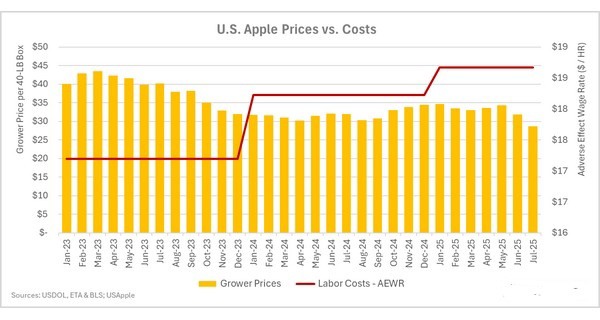The Interim Final Rule published by the Department of Labor (DOL) to revise the methodology for setting Adverse Effect Wage Rates (AEWR) brings long-awaited and much-needed reform to the H-2A wage system.
"In less than three years, grower prices for apples have fallen 28 percent, while labor costs over that time have risen nine percent, and 60 percent over the last decade," said Jim Bair, president and CEO of the U.S. Apple Association (USApple). "The economic strain of that picture is seen in the thousands of growers that are just barely hanging onto their farms, many of which have been passed down through generations."
 © USApple
© USApple
The proposed H-2A changes reflect many of the reforms the organization has long advocated for, including a more market-based system that discontinues use of the flawed Farm Labor Survey to underpin the AEWR.
"The Administration's action should help anchor the AEWR to market reality, providing much-needed relief to growers who have seen rising labor costs consume their returns, in many cases pushing them into the red," said Bair. "We are grateful to the Department of Labor and the Administration for advancing policies that reflect business realities for apple growers."
The specific impact for apple growers will depend on job classifications and state-by-state wage levels. USApple and its coalition partners are closely reviewing those details.
 © USApple
© USApple
- Since 2023, grower prices are down by 28 percent while Labor Costs (AEWR – not including housing, transportation and other administrative fees) are up nine percent.
- Average U.S. AEWR is up 57 percent over the last decade – it's up 62 percent in the top seven apple-producing states.
- Labor accounts for around 60 percent of apple growing costs, but inflation is hitting other inputs as well – nitrogen and phosphate fertilizer costs are up around 20 percent to 50 percent over the decade.
 For more information:
For more information:
Lynsee Gibbons
US Apple Association
[email protected]
www.usapple.org
